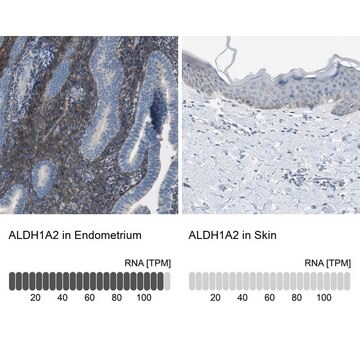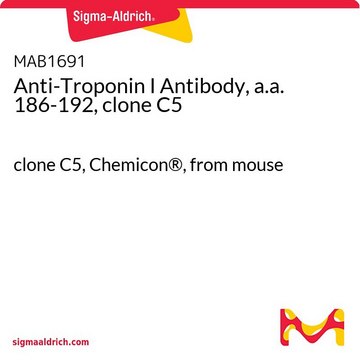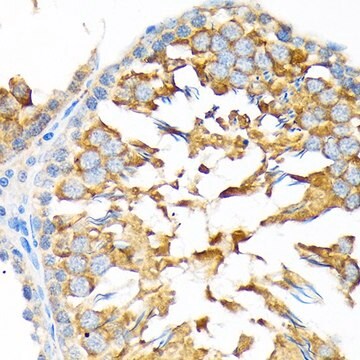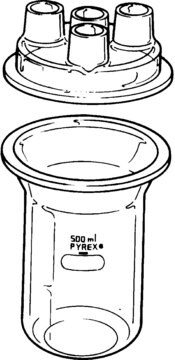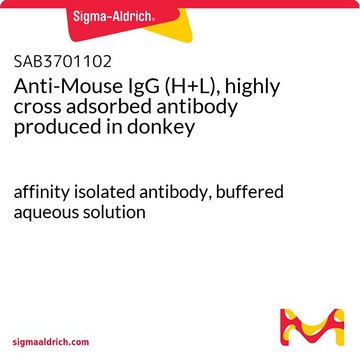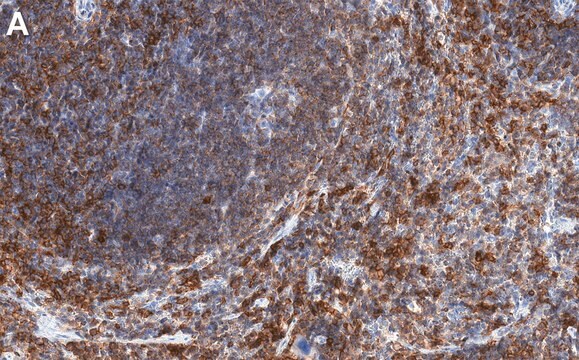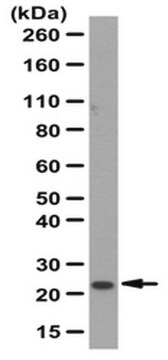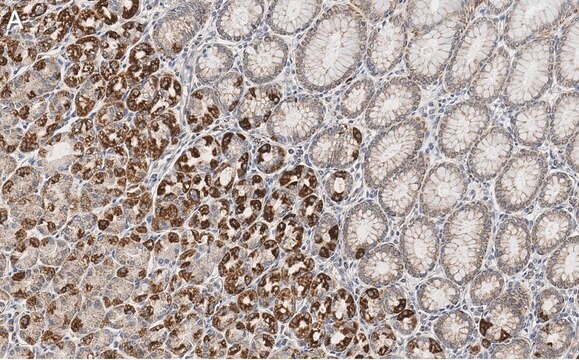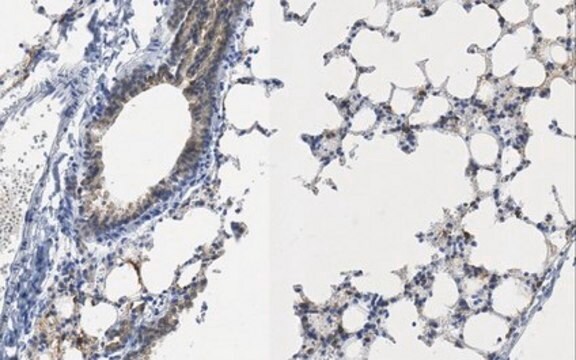ABN420
Anti-RalDH2 (ALDH1A2)
from rabbit, purified by affinity chromatography
Sinônimo(s):
Retinal dehydrogenase 2, Aldehyde dehydrogenase family 1 member A2, RALDH 2, RalDH2, RALDH(II), Retinaldehyde-specific dehydrogenase type 2
About This Item
Produtos recomendados
fonte biológica
rabbit
Nível de qualidade
forma do anticorpo
affinity isolated antibody
tipo de produto de anticorpo
primary antibodies
clone
polyclonal
purificado por
affinity chromatography
reatividade de espécies
rat, human, mouse
reatividade da espécie (prevista por homologia)
canine (based on 100% sequence homology)
técnica(s)
immunofluorescence: suitable
immunohistochemistry: suitable (paraffin)
western blot: suitable
nº de adesão NCBI
nº de adesão UniProt
Condições de expedição
ambient
modificação pós-traducional do alvo
unmodified
Informações sobre genes
human ... ALDH1A2(8854)
mouse ... Aldh1A2(19378)
Descrição geral
Especificidade
Imunogênio
Aplicação
Immunofluorescence Analysis: A 1:300 dilution from a representative lot immunostained the developing eye in paraffin-embedded embryonic E15 Sprague Dawley (SD) rat head sections by fluorescent immunohistochemistry (Courtesy of Anna Ashton, University of Aberdeen).
Western Blotting Analysis: A 1:3,000 dilution from a representative lot detected RalDH2 in 50 µg of new born (postnatal P0) Sprague Dawley (SD) rat whole eye tissue lysate, but not in adult SD rat brain lateral cortex and pons tissue lysates (Courtesy of Anna Ashton, University of Aberdeen).
Neuroscience
Qualidade
Immunohistochemistry Analysis: A 1:250 dilution of this antibody detected RalDH2 in mouse retina tissue section.
Descrição-alvo
forma física
Armazenamento e estabilidade
Outras notas
Exoneração de responsabilidade
Não está encontrando o produto certo?
Experimente o nosso Ferramenta de seleção de produtos.
Código de classe de armazenamento
12 - Non Combustible Liquids
Classe de risco de água (WGK)
WGK 1
Certificados de análise (COA)
Busque Certificados de análise (COA) digitando o Número do Lote do produto. Os números de lote e remessa podem ser encontrados no rótulo de um produto após a palavra “Lot” ou “Batch”.
Já possui este produto?
Encontre a documentação dos produtos que você adquiriu recentemente na biblioteca de documentos.
Nossa equipe de cientistas tem experiência em todas as áreas de pesquisa, incluindo Life Sciences, ciência de materiais, síntese química, cromatografia, química analítica e muitas outras.
Entre em contato com a assistência técnica